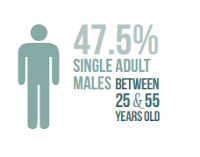Multitasking is a critical ability that allows people to
cope with and flourish in the complex world that we
live in. However, as much as cognitive scientists have
learned about the inner workings of human cognition,
our ability to multitask remains a mystery. In this paper,
we argue that we can best understand multitasking as a
product of production composition (Taatgen & Lee,
submitted), a computational theory of procedural skill
acquisition that has been implemented within in the
ACT-R framework (Anderson & Lebiere, 1998).
Production composition has been used successfully to
account for skill acquisition in a wide variety of
domains including language learning (Taatgen &
Anderson, submitted) and individual differences in
complex skill acquisition (Taatgen, 2001). We believe
that it can also be used to account for the acquisition of
multitasking skill.
Multitasking is the ability to handle the demands of
multiple tasks simultaneously. At the most basic level,
this may involve executing multiple perceptual-motor
actions at the same time, such as moving your attention
to the next lane and turning the steering wheel. At a
more complex level, this may involve interleaving the
steps of many complex tasks, such as shifting down to a
lower gear while navigating a curve and carrying on a
conversation.
Important insights into people’s ability to multitask
come from the dual-task performance literature. One
such insight is that while there is some interference
between the two tasks that are being performed (with a
caveat regarding the modality of stimuli and responses),
people can consciously trade off performing one task
for the other (Wickens & Gopher, 1977). Another is
that people’s performances in both tasks depend highly
on their skill in the individual tasks (Allport, Antonis,
& Reynolds, 1972). That is, being skilled in one task
allows a person to perform it and other tasks with
negligible impact on the overall performance of both
tasks. For example, a skill driver might have little
difficulty talking with a friend while driving, whereas a
novice driver might find it difficult.
Author: Anderson (1995)
Source:
*Agre, P. E., & Chapman, D. (1987). Pengi: An
implementation of a theory of activity. In
Proceedings of the Sixth National Conference on
Artificial Intelligence, 268 - 272.
Allport, D.A., Antonis, B., & Reynolds, P. (1972). On
the division of attention: A disproof of the single
channel hypothesis. Quarterly Journal of
Experimental Psychology, 24, 255-265.
*Anderson, J.R. (1982). Acquisition of cognitive skill.
Psychological Review, 89, 369–406.
*Anderson, J.R. (1995). Cognitive Psychology and Its
Implications. NY: Freeman.
*Anderson, J.R., & Lebiere, C. (1998). The Atomic
Components of Thought. Mahwah, NJ: Erlbaum.
*Byrne, M. D., & Anderson, J. R. (1998). Perception and
Action. In J. R. Anderson & C. Lebiere (Eds.), The
atomic components of thought (pp. 167-200).
Mahwah, NJ: Erlbaum
Fitts, P.M. (1964). Perceptual-motor skill learning. In
A.W. Melton (Ed.), Categories of human learning.
New York, NY: Academic Press.


















